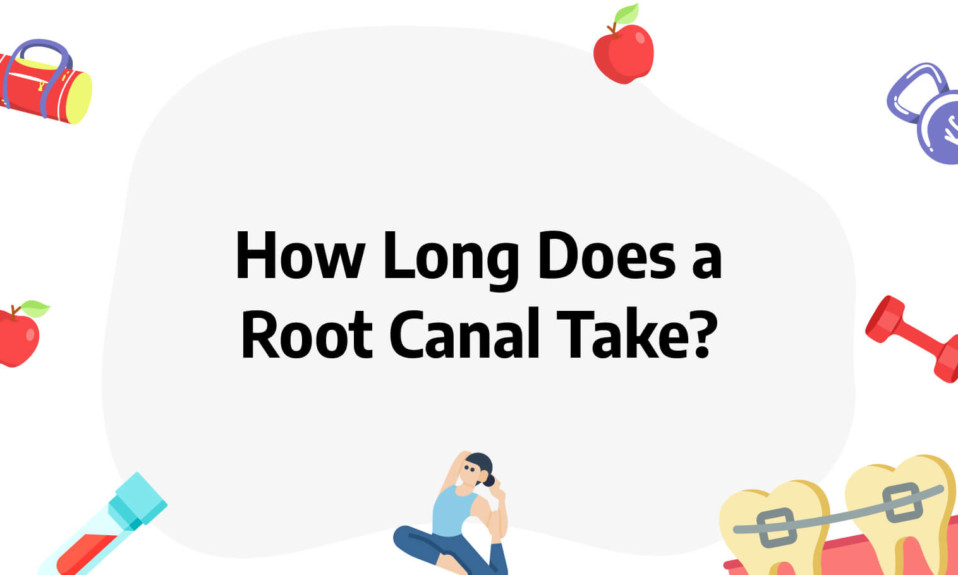Root canal treatment or root canal therapy (endodontic therapy) is a procedure that consists of eliminating an infection or inflammation of the dental pulp (“nerve” of the tooth), by completely removing it.
The two main conditions leading to root canal treatment are pulpitis and pulp necrosis.
By definition, pulpitis is an inflammation of the pulp. It manifests itself by a persistent pain to temperature changes (hot and cold food) or to chewing.
The pulpitised tooth can also grow out for no apparent reason.
Pulpitis can develop when bacteria (present in the cavity) manage to get into the pulp. The chances of developing pulpitis are therefore higher when a tooth is affected by a cavity or a deep restoration near the pulp.
More rarely, pulpitis can also develop as a result of a blow or impact to a tooth.
If not treated in time, a pulpitised tooth usually ends up necrotizing.
The tooth then loses its vitality.
The natural blood flow inside the pulp is replaced by necrotic (dead) tissue, which offers no defense to bacteria that multiply more easily. This is pulp necrosis (infected pulp).
The necrotic tooth also manifests itself by pain when chewing, but without pain when hot or cold.
With time, the bacteria present in the necrotic pulp produce gas or pus, which will try to escape towards the end of the root (towards the bone). A swelling may then appear. We are then at the stage of dental abscess.
What is a root canal treatment?
The tooth is composed of three elements: enamel, dentin and pulp.
The pulp is composed of soft tissue and nerves that allow the development of the tooth and is contained in a small canal.
Once the tooth has finished growing, it no longer needs the pulp, except to alert its owner in case of infection. A tooth with an affected pulp is usually painful. Sometimes, however, the patient does not feel any discomfort.
When a cavity, a crack or a fracture damages the tooth, the pulp can be affected. Bacteria from the oral cavity then gain access to the nerves and create an infection, inflammation or abscess.
In this context, root canal treatment consists of drilling the tooth to access the pulp, removing it and treating the infected area. The endodontist or dentist will then fill the small canal with a small rubber cement called gutta-percha after carefully cleaning the canal.
Before intervening, the health care professional will make sure that it is a problem that affects the pulp. To do this, he or she can test its sensitivity to shocks, heat and cold and even use x-rays.
When is a root canal needed?
First, a root canal is necessary when a cavity or cracks in the enamel allow bacteria to get into the dental pulp, which is the inner part of the tooth that contains nerves and blood vessels and ensures the growth of the tooth when young.
The pulp can then become infected and cause inflammation.
Once the growth phase of your teeth is over, the dental pulp no longer plays such an important role and if it becomes infected, your dentist must remove it.
Also, installing a post may require a root canal if the tooth is too damaged to hold a filling or crown.
There are also times when the tooth pulp dies without pain or infection, but treatment is still required.
Even if your tooth is devitalized, it will still perform its basic functions of preserving the jawbone, maintaining the position of the teeth and promoting good chewing.
And if you’re worried about root canal treatment, keep in mind that an untreated pulp infection can lead to the formation of a dental abscess, a very painful advanced infection, and have serious consequences on your overall health.
What is the root canal procedure?
A root canal treatment is now usually performed in one or two sessions. The duration of these sessions varies according to the condition of the tooth and the number of canals (roots).
Here is a summary of the steps followed by a dentist or an endodontist during such a procedure:
- Use local anesthesia to avoid any pain during the treatment
- Place a dam around the tooth to be treated to prevent the bacteria in your saliva from coming into contact with it during the procedure
- Make a small opening in the tooth to access the root canal and damaged pulp
Using precision instruments, remove the pulp by cleaning and widening the canal - Fill and seal the canal
- Close the tooth with a temporary or permanent filling.
Because a root canal-treated tooth can become more brittle and susceptible to breakage, a treatment plan often also includes the placement of a post and crown to solidify the tooth.
How long does a root canal actually take?
The duration of the treatment depends on several factors: the number of canals depending on the tooth to be treated (variable from 1 to 4 canals), the access to the canals which varies according to the damage of the tooth, the complexity of curved roots or very narrow canals.
However, in the vast majority of cases, the treatment can be done in one or two sessions.
Your dentist is in the best position to assess the situation in order to achieve the best possible result.
Is it painful to do a root canal?
A root canal is not a painful procedure.
Rather, it relieves the pain caused by inflammation or infection of a tooth.
When a root canal is performed, the dentist injects anesthetics to block the pain. The dentist can then treat the infected tooth.
Since the procedure can last from one to several hours, the dentist ensures that the patient is comfortable by making sure that the dose of anesthetic is sufficient.
A root canal appointment can be similar to a filling procedure for a patient.
So why does root canal therapy have such a bad reputation?
There are several reasons for the fear of pain with this procedure.
In the past, the anesthetics used were not as effective as they are today.
Some patients may have felt pain and associated it with root canal treatment. Fortunately, the local anesthetic that dentists now use is most effective and blocks the pain.
Sometimes a tooth can have an abscess that is painful. Before a root canal can be performed to resolve the situation, the patient may experience severe pain that they associate with the root canal. However, the tooth is under local anesthesia when the dentist performs a root canal, so the patient does not feel any pain.
Root canal treatment may happen that the dentist is not able to perform a root canal immediately when the abscess is too large.
An antibiotic is then prescribed to the patient so that the effect of the local anesthetic will be effective when the root canal is performed at the next appointment.
Slight pain may be experienced following a root canal.
This may last for a few days or even a few weeks. When necessary, the dentist usually advises painkillers to make the patient feel comfortable again.
If pain persists or develops after a root canal, it is important to talk to your dentist. There may be a suspected problem such as a cracked tooth or hidden canals in the root that the dentist or endodontist did not see, even if the root canal treatment was performed correctly.
In the end, root canal therapy should not be feared as an intervention, but rather considered as a treatment towards healing.
What are the risks of a root canal?
The vast majority of root canals are successful on the first try, meaning that pain from cavities and other conditions disappear within days of the procedure and the good results can last a lifetime.
In rare cases, the treatment may fail and various problems may occur. There are various reasons for this:
- If oral hygiene after the procedure is inadequate or insufficient, complications can occur, especially due to the potential proliferation of intraradicular bacteria
- Tooth canals could not be sufficiently cleaned due to their narrowness, curvature or difficulty in accessing them. If nerves are still present in the tooth after the procedure, persistent pain may occur
- The treated tooth has not been adequately restored. The treated tooth has not been properly restored and may crack or fracture
- The crown placed after the root canal treatment is fractured and the filling is no longer watertight
- A piece of instrument may have become stuck in one of the canals of the treated tooth
- An excess of composite resin, used to fill the canals, may interfere with the occlusion and cause pain when chewing
- Root infection or cracking can also occur as a result of root canal treatment.










